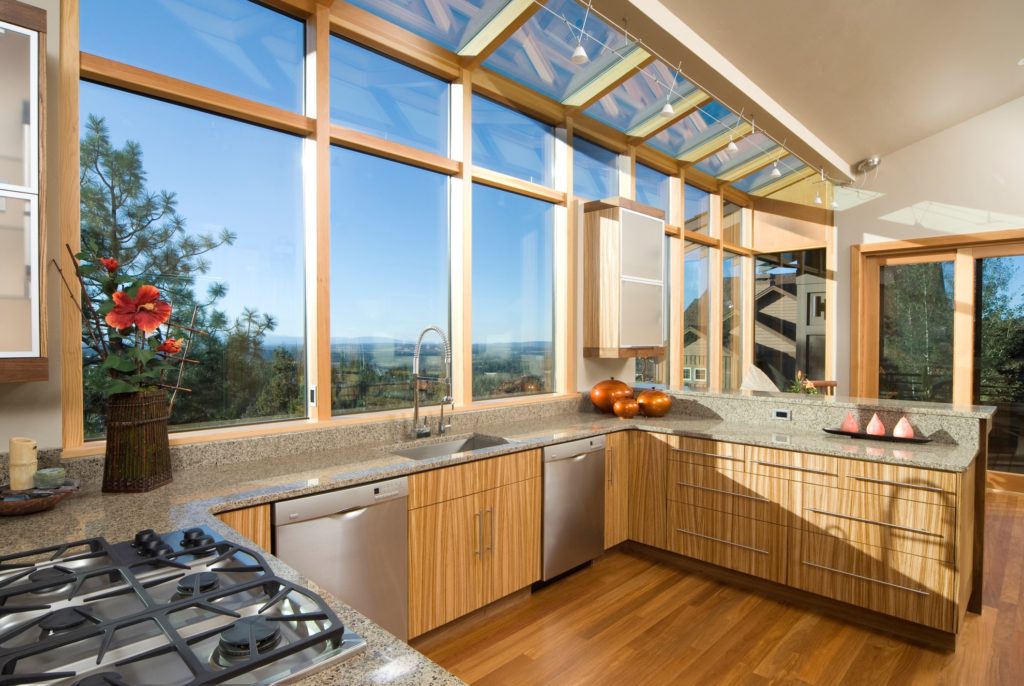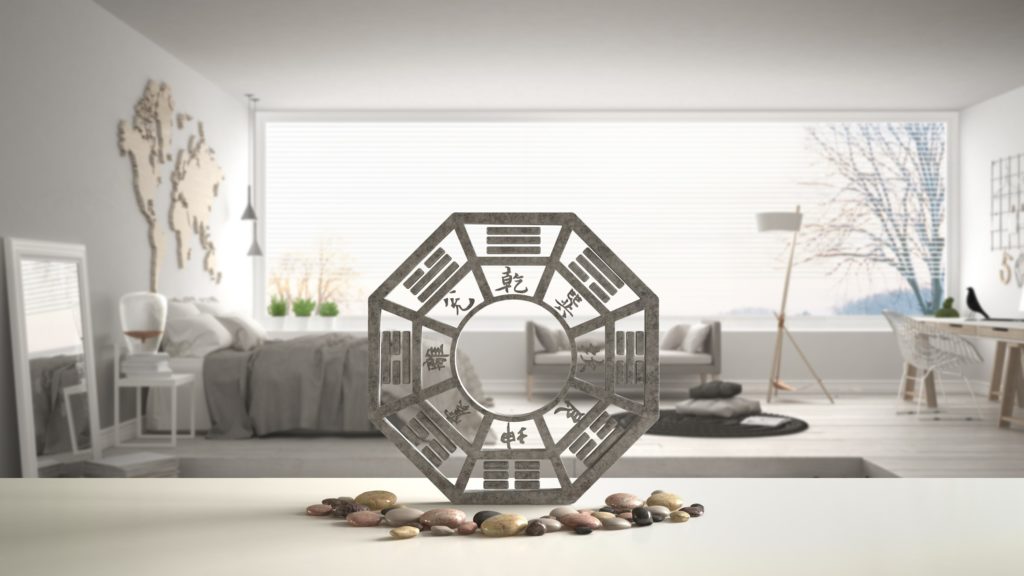Have you heard of the ancient Chinese philosophy of feng shui – a concept centered around bringing harmony and positive energy to a space and the people occupying it?
If so, great. If not, fear not, because we’re about to explain the concept and how you can put it to work for you.
What Is Feng Shui?
Feng shui is a nearly 3,500 year-old belief that the orientation of structures and placement of objects within them affects the flow of energy, and subsequently the well being of its inhabitants. Principles of feng shui (which means “wind-water”) appear in Chinese astrology and metaphysics as well as in Buddhism and Taoism. Today, the practice – more than a philosophy – continues to influence the placement and design of buildings and interior spaces. Many designers consult feng shui experts when determining colors, furniture placement, and materials.

Essential Principles
There are three essential principles of feng shui that, when combined, create a space that exists in harmony with nature.
- Bagua – the energy map used to balance the 8 fundamental principles of reality
- The five elements – wood, fire, earth, metal, water
- The concept of command position
The Bagua Map
This principle focuses on those areas of home and life we want to improve. The map can be depicted as a 3×3 grid where each square represents one of the fundamental principles of life:

- Wealth & Gratitude
- Family & Connections
- Knowledge & Insight
- Career
- Fame & Character
- Partnership & Love
- Children & Self-Expression
- Helpful People & Support
You can incorporate the bagua map into your home by choosing two to three areas you’d like to improve and focusing on one room or designated space. Each area of the bagua correlates to a particular color, shape, season, number, and element.
The Five Elements
The elements correspond to shapes, colors, seasons, and baguas, with each representing a life phase balanced in harmony. Choose two or three elements to focus on in each room or space.
Fire – A summer element that falls into the character and fame bagua. It is signified by the color red and pointy shapes. Fire possesses passion, brilliance, and illumination.
Water – Water falls into the career bagua and is associated with wavy-curvy shapes, winter, and the color black.
Earth – Falling into the partnership and love bagua, earth signifies self-care and stability. It’s represented by flat and square shapes as well as yellow, brown, and orange colors. Earth is a transitional season.
Wood – Wood falls into the family and connections bagua and is a spring element. It suggests vitality, expansiveness, and upward motion, and is represented by columnar and rectangular shapes plus blue and green colors.
Metal – Represents precision, efficiency, and beauty. It’s an autumn element and falls into the helpful people and support bagua. Choose circular and spherical shapes and white or metallic colors for this element.
The Command Position
The command position refers to the point in a room opposite to and farthest from the door, but not directly in line with it. One should be able to see everything coming through the door from this position and have time to react to or develop a strategy to deal with whatever or whoever might be doing so. This position establishes dominance, so it’s an ideal location for a bed in a bedroom or desk in an office. Place different objects associated with the five elements in a diagonal alignment in relation to the command position to create balance within the room.
Yin and Yang
Yin and yang refer to the two opposing, complimentary forces that make up all aspects of life. Yin suggests qualities that are feminine, passive, cold, dark, soft, negative, and inward. Yang typically suggests masculine characteristics like hot, light, active, hard, outward, and positive. Balance the yin and yang in a room by incorporating a mix of shapes, colors, and textures that are in harmony with the traditionally feminine and traditionally masculine, such as soft pillows and throws in light colors.
Thoroughly confused? It’s easy to become so, especially when confronted with such an intriguing and multi-tiered approach to rethinking your home. But it’s worth a closer look. So are, for that matter, your heating and cooling systems. As in, they need to be carefully looked at – tuned up and inspected – at least once a year to enhance your family’s indoor comfort and prevent potentially costly repair bills. Contact Optimum Air today to schedule service and give yourself one less thing to think about.